Monteverde may be a small canton in Costa Rica, but it offers plenty to do and see for tourists. Although Monteverde is famous for incredible birdwatching and breathtaking cloud forests, it is also a great place to learn about horticulture and agriculture. If you love food, farming and gardening, then a Monteverde farm tour should be on your list of things to do.
We visited El Trapiche, a locally family owned farm in Monteverde. This family brought the first sugar mill to Monteverde in the late 1940’s.
Nowadays, visitors can take a 1 hour and 45 minute tour on the El Trapiche farm, to learn about three important crops in Costa Rica: coffee, cacao and sugar cane.
This post has affiliate links which we may earn a small commission from if you choose to purchase, at no extra cost to you. Any prices listed may not reflect current pricing. It is the readers responsibility to research current pricing. Prices are quoted in USD. More info: Disclosure
Monteverde Farm Tour Video
You can watch our video of the Monteverde farm tour below. You can read on below to see more of our thoughts and some photos.
What to Know About this Monteverde Farm Tour (Typical Trapiche)
- 1.5 hours long
- About half indoor and half outdoor. Does require a bit of walking on a concrete path over some small hills. 1.1 km total walking distance (.64 miles).
- Path is wheelchair accessible
- Monday to Sunday with tours at 10 AM, 1 PM and 3 PM
- 14 guests in one tour per guide (guide is bilingual in English and Spanish)
- 3.7 km (2.3 miles) from Santa Elena downtown. ~10 minute drive. 4×4 not required, but high clearance car is
- Includes cacao, coffee, sugar cane tasting and snacks (coffee, arracache, lemonade, piece of chocolate)
Ready to book this tour and need transportation? Click here to go to our Monteverde tours booking form to request your tour! Have your own transportation? Contact us to help you book your tickets.
El Trapiche Tour (Monteverde Farm Tour with Coffee, Cacao and Sugar Cane)
The tour started off with a stop at their garden to see a particular plant called arracache. It’s a root vegetable and it’s kind of an older generation kind of food, you don’t see it as much anymore, even in the local restaurants these days.
It is very delicious when prepared correctly, and this was actually the snack we had at the end.
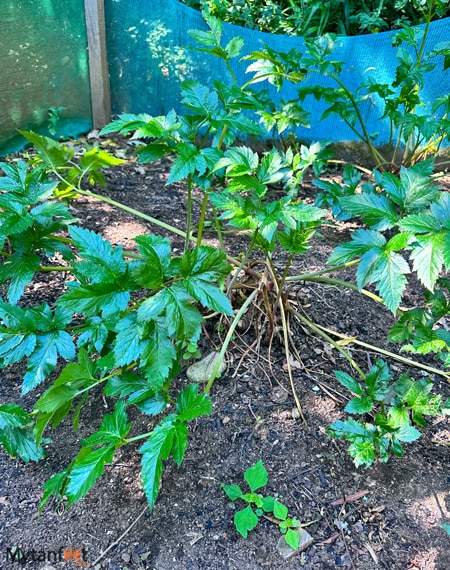
Afterwards, we headed to our second stop to see sugar cane. We saw the plant and learned how to distinguish when a cane is ready for harvesting or not.

Sugar cane is, to me, a fairly boring plant to look at. It looks like very tall and thick grass!
That is why it’s so fascinating to learn about where your food REALLY comes from. Then you can appreciate it so much more once you find out the entire process to create the food on your plate.
It is hard to believe that nearly all sweet treats that we love to eat today, have to come from this tall plant that looks like grass!
After seeing the sugar cane plants, we moved onto the next crop, coffee. But we weren’t done with sugar cane yet! Our guide told us we would be making our own traditional Costa Rican sugar candy, called sobado at the end of the tour.
Coffee
I don’t know about you, but I can’t live without coffee and I am a black coffee drinker all the way. I absolutely love Costa Rican coffee!
I think a lot of people don’t truly know what coffee tastes like. They put so much sugar, cream, milk and stuff to the point where it’s more like a dessert.
So for someone who thinks they like coffee, but normally drinks a strawberry-cream-mocha-choco-latte from Starbucks, they will be very surprised to learn about how coffee truly tastes like and how it is cultivated.
The tour starts off with an introduction to the coffee tree. That’s right – coffee comes from a cherry grown on a tree!
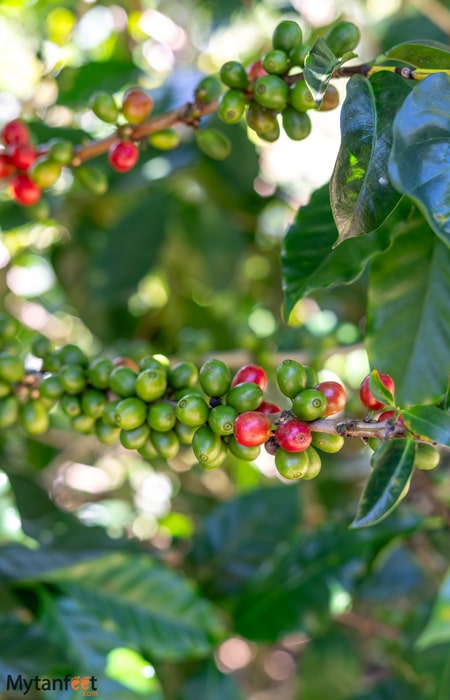
When the cherries are picked, they go through an entire peeling, washing and drying process in order to get the bean.
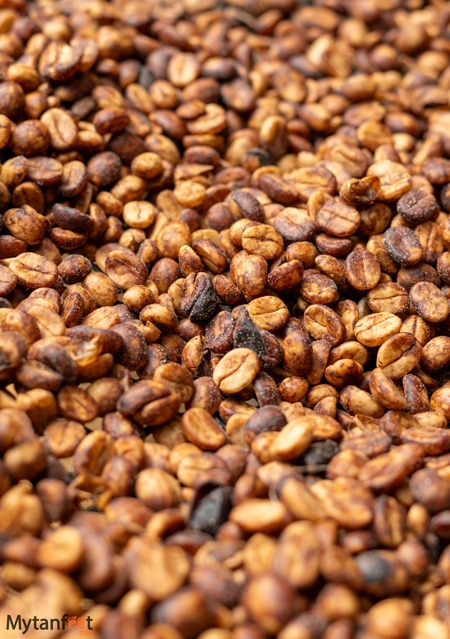
For the coffee farms that export their coffee, they will normally export the beans without being roasted, as most buyers want to roast their own coffee.
Did you know that the longer coffee is roasted, aka dark coffee, it has less caffeine? Light roasted coffee has the most caffeine.
El Trapiche processes and roasts their own coffee, which has actually won awards. I bought five bags when we went and their coffee is one of my absolute favorite ones in Costa Rica. You will get a chance at the end of the tour to purchase their coffee at their store.
After the coffee presentation, we headed to the last stop: cacao.
Cacao (Chocolate)
Now, cacao doesn’t actually grow well in Monteverde because this tree loves heat and humidity. Monteverde has cool mountain weather.
So to grow in Monteverde, they have to put the cacao trees inside a greenhouse. Cacao trees grow very well in places like Puerto Viejo de Talamanca on the Caribbean coast and La Fortuna de San Carlos in the Northern Lowlands.
Cacao is a very important local crop, especially to the indigenous communities. The Bribri indigenous community on the Caribbean side, use cacao in spiritual rituals and for medicinal purposes. Check out this Bribri chocolate tour we did!
Now, can you believe that what we know as chocolate, begins its life as a fruit on a tree!
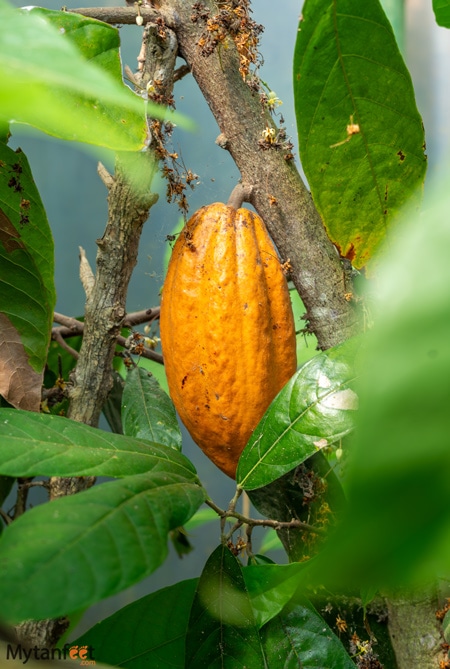
The cacao presentation showed us what the trees were like, how to extract the beans, dry, roast and grind them.
Then to create chocolate, companies buy the cacao beans and they process it themselves to create their own chocolate by adding milk, sugar, etc.
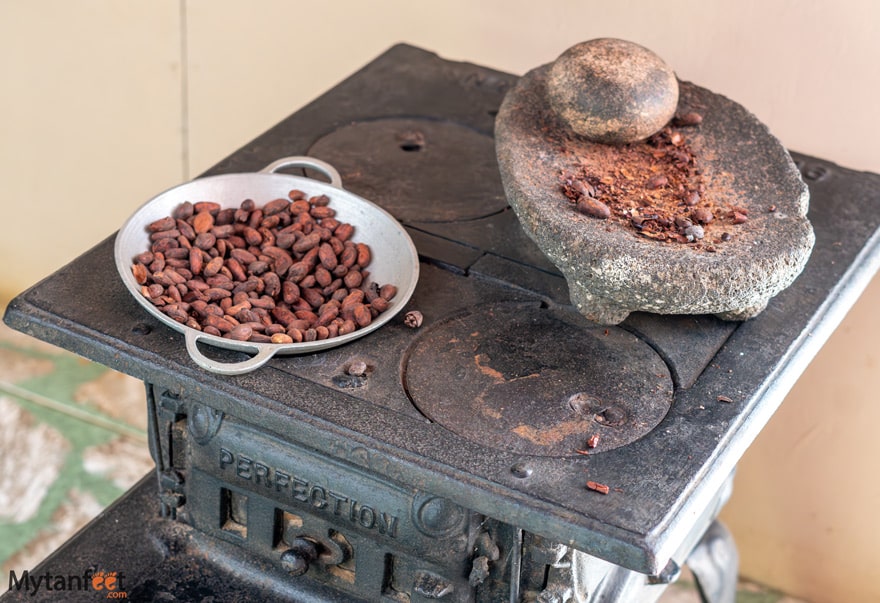
We then got to see how they used to grind coffee using traditional methods.
Making Sugar Cane Candy
The last part of the tour was inside the sugar cane mill, to see the original diesel-powered mill the family used to use.
We got to throw in some sugar cane, saw them melt it down into a liquid, and then we got to make sobado, the traditional Costa Rican sugar candy.
This part is fun and very interactive and a great way to end the tour. They pour some of the liquid on to the table and then you have to mix it super hard and fast for a minute or so, until it turns into a hard sugar candy.
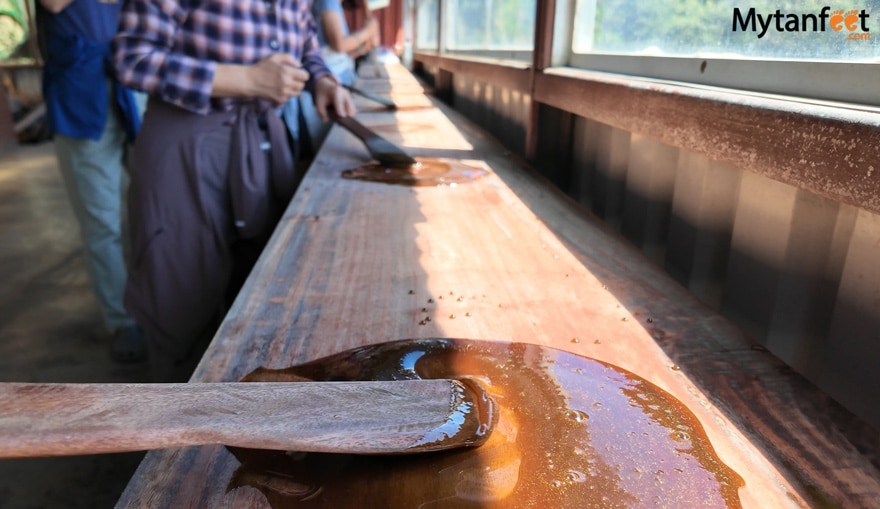
They’ll bag it up for you and then you can take it to eat or give as a gift.
Snacks at the End of the Monteverde Farm Tour
Now it’s snack time. You’ll head inside to get a cup of coffee, lemonade, your tortilla with arracache and a piece of chocolate. They’ll make coffee the traditional way, which is fun to see.
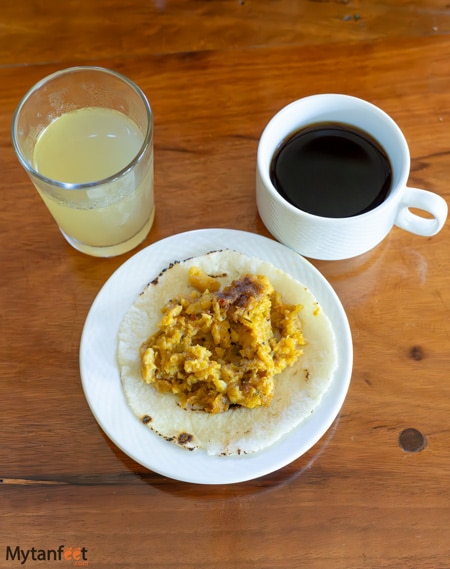
This was a very nice way to end the entire tour. You get to taste the local coffee, the arracache, made the traditional way, taste sugar cane juice and make your own candy!
Final Thoughts
Our guide was GREAT! We have done a ton of tours in Costa Rica and she was excellent. Very good English, really sweet, knowledgeable and knew very well how to interact with the guests. She’s a sweetheart!
1 hour and 45 minutes is the perfect amount of time. Not too long that it gets boring, but long enough to have time to see, learn and interact with each crop. You will have plenty of time during the day to do another activity.
A sample day itinerary could be ziplining and hanging bridges at Selvatura Park at 830 AM in the morning, then a quick lunch and then the Monteverde farm tour at El Trapiche at 1 PM. You’ll finish around 3 PM with plenty of time to go watch the sunset at 530 PM.
Want to book this tour and need transportation? Fill out our Monteverde tours booking form and we’ll be happy to assist you.
Plan Your Trip to Monteverde
How to spend 1, 2 and 3 days in Monteverde
5 day La Fortuna and Monteverde itinerary
Need a hotel in Monteverde? Use our 5% promo code “mytanfeet” to save $$ at the following hotels: Hotel Poco a Poco, Monteverde Country Lodge and Sibu Lodge. All wonderful places to stay in Monteverde with a great location, excellent restaurant and very cozy and comfortable rooms. Disclaimer: We receive a tiny commission if you book through those links using our promo code, at no extra cost to you.

Leave a Reply